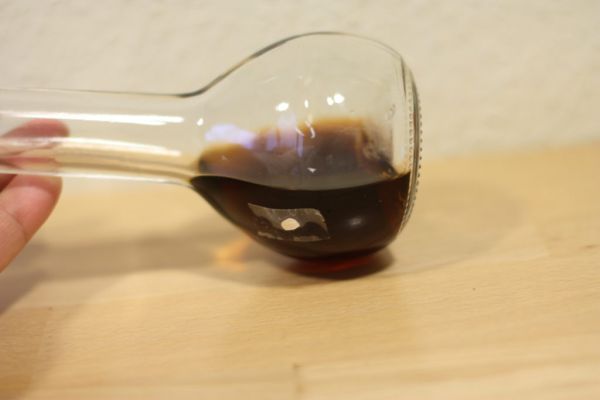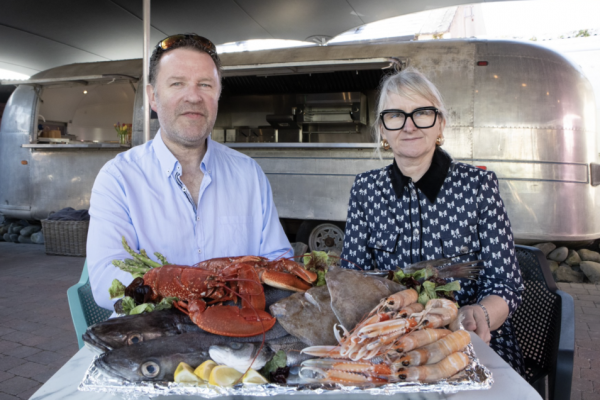If for you the word "walnut" calls to mind nothing but sundae toppings and salad dressings, then now is the time to expand your horizons. Like, right now. Rouse yourself to investigate the walnut liqueur called nocino.
Why the rush? Deep winter is prime season for a dark delicacy that’s bottled in summer and traditionally released around Christmas; in cold weather, its spicy bittersweetness sticks to the bones and the soul. And if you try it, you will not be alone: The elixir is suddenly prominent at popular cocktail bars and with home mixologists. It’s no longer the purview of just snooty bartenders and kerchiefed nonnas.
Indeed, nocino is popping up in so many places—in drinks and, yes, on sundaes—that it’s becoming hard to find; demand is outstripping supply and stockrooms have been stripped bare. If you’re at all tempted by the promise of its complexity, run out to your finest local liquor store for a bottle as soon as possible. But first, what you need to know.
How it's pronounced:
With a soft c and an i like a long e: no-CHEE-no.
Where it's from:
Traditionally, the Emilia-Romagna region of Italy, at the foothills of the Appennines. In those parts, nocino is a local tradition comparable to that of limoncello, further down the peninsula. Every family swears by its ancestral recipe. (Nearby Austria has a similar tradition in its Nux Alpina Walnut Liqueur, which has made a big impression among international bartenders.)
American distilleries have tried to get in on the game, too, but have been hampered by Mother Nature. Ohio's Watershed Distillery (most famous for its crisp bourbon and frisky gin) made and moved 2,500 bottles of its first nocino in 2014-15. The next year it shipped 5,000, and this season it failed to reach a goal of 10,000 only because of a disappointing walnut harvest. Meanwhile, across the border in Indiana, Cardinal Spirits is in its second year of distributing a relatively strong (80 proof) maple-tinged nocino—it says that of all its seasonal spirit releases, it’s the most popular.
How it’s made:
First, you pluck a ton of unripe walnuts. (In Italy, this is historically done around the feast day of St. John the Baptist, June 24, but these days you take whatever climate change gives you.) You cut them up and wait for months while the walnut, along with sugar and whatever spices and botanicals you choose, infuses your hooch (vodka is prevalent, brandy is divine). You can do this at home if you’ve got a walnut tree and a lot of free time.
How to drink it:
With pleasure. While traditionally taken as an after-dinner drink, it also works well over ice, with or without a spritz of seltzer, before the meal. Cocktailians use it to enrich Manhattans and complicate amaretto sours.
“A little goes a long way,” says Jillian Vose, beverage director of the Dead Rabbit and BlackTail. “When I started thinking about spirits that nocino would go well with, the first things to mind were dark rums, Cognac, Genever, and Irish whiskey.” Vose’s Black Rose uses the merest fraction of Nux Alpina Nocino to spice up an old-fashioned variation built around Tullamore Dew.
At Manhattan’s Up & Up, bartender Valerie Zolkina ups the ante by combing nocino with whiskey and wine in a drink named, with a wink at drink-naming conventions, the Pop Culture Reference. “The bitter walnut flavor combines nicely with the tannin in the red wine to produce a clean and aromatic finish," Zolkina says. She is not alone in loving nocino for being subtle and dynamic at once: “Nocino likes to sit at the low end of a cocktail's flavor profile and then dance around at the end.”
Black Rose
Adapted from the Dead Rabbit's Jillian Vose
2 oz. Earl Grey tea-infused Tullamore Dew 12-year-old Irish whiskey 0.5 oz. Pierre Ferrand Dry Curaçao 0.25 oz. Walnut/Averna Biz (2 parts averna: 1 part Nux Alpina Walnut Nocino) 1 barspoon rich cane syrup 1 dash aromatic bitters
Garnish: orange oils
Stir well with ice. Strain into a chilled old-fashioned glass over one large ice cube. Twist and discard a strip of orange peel. Serve.
Pop Culture Reference
Adapted from Up & Up's Valerie Zolkina
1.5 oz. Suntory Whisky Toki 0.75 oz. dry red wine, such as Clos La Coutale Cahors 0.5 oz. Pedro Ximénez sherry 0.25 oz. nocino 1 barspoon Demerara syrup
Garnish: Lemon twist
Stir well with ice. Strain into a chilled cocktail glass. Garnish and serve.
News by Bloomberg, edited by Hospitality Ireland









